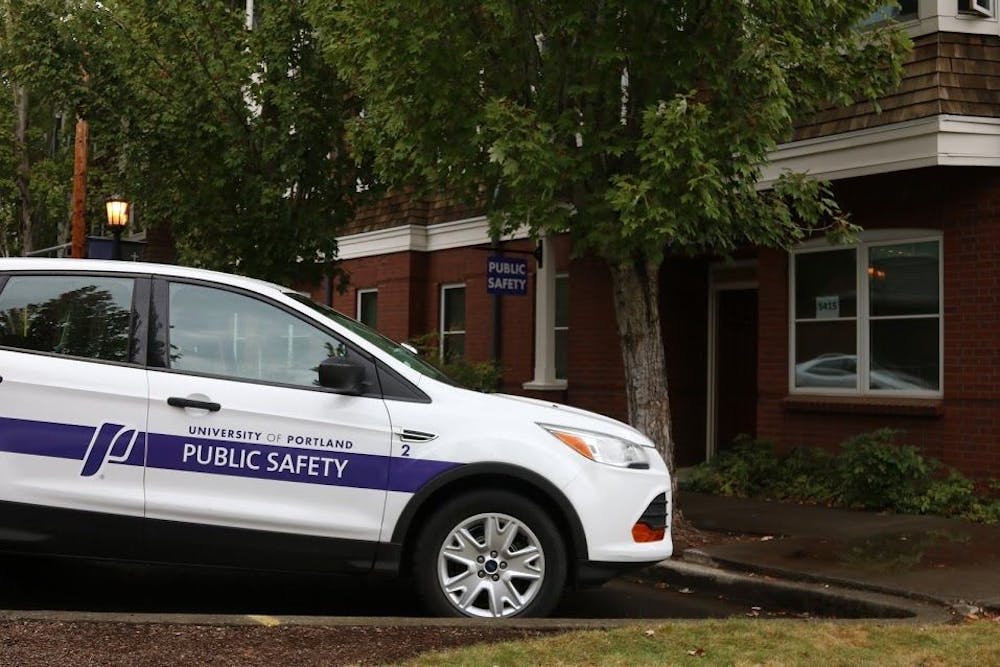This story has been updated to reflect the most recent information.
University of Portland will be testing its emergency alert system on Wednesday, April 11, according to Director of Public Safety Gerald Gregg. The system sends voice, email and text messages to the UP community in the event of crises like natural disasters and active shooters.
"In light of recent tragedies Public Safety encourages all participants in the mass notification system to take the opportunity to consider how you would respond in an actual emergency and to practice lockdown procedures for where you will be located on campus during the test," Gregg said in a community wide email Wednesday.
As mass shootings like those in Harford County, Maryland and Parkland, Florida are becoming more deadly, systems and drills like these play an important role.
Gregg said he is hoping for full community engagement in the drill. Public Safety is asking students and faculty to take the same precautions as if the drill were real, including moving to secure locations and locking doors. While this is taking place, Public Safety officers will be patrolling campus to observe how people react. Gregg also explained that professors holding classes at the time of the drill will be urged to pause their classes and participate.
With gun violence at the heart of national conversation, it’s important to review what actions students should take in the hopefully unlikely event a shooting occurs on the UP campus. Gregg recommends students take precautions now to prepare for a potential disaster situation. This includes opting in for UP’s emergency notification system, which can be found at the bottom right of the Pilots.UP homepage and developing a “survival mindset.” Gregg also advises that students watch the active shooter response video: “Shots Fired on Campus.”
The video details actions to take in the event of an active shooter situation, including how to hide effectively and what to do when law enforcement arrives.
“First and foremost, I want people to think about if there’s some kind of an emergency in the area, in terms of where they live, where they work, where their office is,” Gregg said. “If it’s a fire drill or some sort of other emergency, how do I get out?”
In terms of actions to take as a student, faculty or staff member, Gregg shared three strategies if caught in an active shooter situation.
“First of all, run,” Gregg said. “If you can get away from the scene of an active shooter, you should do it.”
“If you don’t have enough information about where it’s occurring, or you don’t believe you have enough opportunity to get away from the scene, then you should hide,” Gregg said. “Close and lock [your] door, draw [your] blinds, silence [your] cell phone, and hide somewhere in [the] room.”
And if all else fails, and you’re confronted by the shooter: “You have to fight, and you have to fight to survive, and you have to be committed to that,” Gregg said. “Think about what [you] could defend [yourself] with: your hands, a chair, a pen.”
If an active shooter situation were to arise on campus, Public Safety officers are prepared through annual trainings, including exercises with Portland Police, and they are instructed to contact Portland Police to provide assistance where necessary.
UP Army ROTC conducts similar trainings. According to Lieutenant Colonel Dennis McGee, training in anti-terrorism and force protection is both a university requirement and a part of the Army ROTC curriculum. This includes actions to take in the event of an active shooter.
In the aftermath of some of these shootings, those who knew the shooter sometimes remember warning signs months or years before the event. Though UP’s Early Alert system is in place to help students with a multitude of issues including homesickness, depression and medical concerns, it can also be used to bring attention to students who may raise any of these red flags. If a student, faculty or staff member is concerned about the safety, mental health or potential dangers posed by another member of the UP community, they can file an Early Alert.
Although Gina Loschiavo, coordinator of UP’s Early Alert program, says people who might pose immediate danger should be reported to 911 and Public Safety, less urgent situations may be appropriate for reporting through Early Alert.
“The Early Alert program will receive the concerns, assess the situation, and work to make sure the student is connected to resources,” Loschiavo said. “If a student is having a hard time, really anyone can submit an Early Alert to make sure that they’re getting a little extra support.”
When an alert is filed, students are contacted by a university official. This is usually a hall director, or in the case of off-campus students, by Loschiavo herself. Students are then put into contact with resources, such as those at the Shepard Academic Resource Center and the Health and Counseling Center, to assist them with whatever they may be experiencing.
If students are deemed to be threats to themselves or others, Loschiavo explained, their report is referred to the Behavioral Intervention and Threat Assessment team (BITA). The team, which includes Gregg and Loschiavo, looks into potential threats and takes action as necessary.
In the 2017 Convocation, President Rev. Mark Poorman explained that BITA “provides a proactive, prevention-based approach that balances the individual needs of the student, as well as the well-being of our faculty, staff and the greater university community,” Poorman said.
According to the January 2018 report to the board from the Division of Student Affairs, 231 cases were reported to Early Alert in fall 2017, a seven percent increase from its implementation in fall 2016.
“Hopefully this emergency preparedness is what we practice and talk about, and think about over and over again, but is something we’ll never have to use,” Gregg said.








